#enantiornithe
Explore tagged Tumblr posts
Text






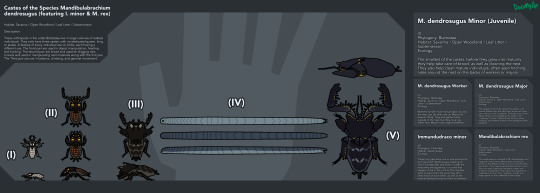



Part I / III of my Lemuria Phase I submissions!
I hope they are readable lol
#artists on tumblr#paleoart#paleo#paleomedia#paleontology#digital artist#fanart#paleostream#mesozoic#lemuria#lemuriachallenge#sauropod#pterosaur#azdarchid#abelisaurid#enantiornithe#pycnodont#elasmosaur#mosasaur#notosuchia#rudist#noasaur
53 notes
·
View notes
Text

“The Ritual”
Two bull Furcatoceratops fight for mating rights, unaware they’re being watched by an enantiornithe and a female of their species.
53 notes
·
View notes
Text
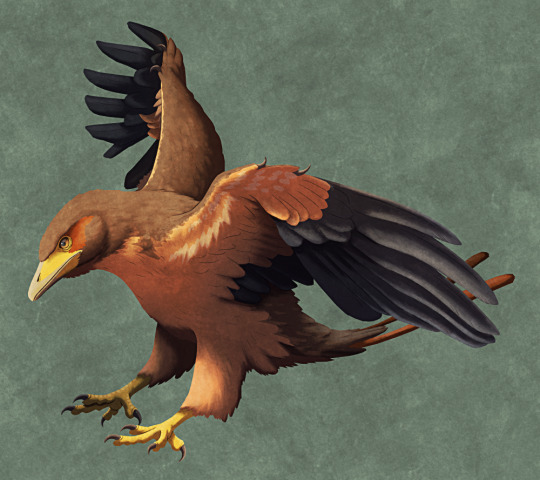
Avisaurus darwini here lived at the very end of the Cretaceous, about 66 million years ago, in what is now the Hell Creek fossil beds in Montana, USA.
It was a member of a diverse group of Mesozoic birds known as enantiornitheans, which retained claws on their wings and often still had toothed snouts instead of beaks – and being part of the avisaurid family it was also one of the larger known examples of these birds, similar in size to a modern hawk at around 60cm long (~2').
Although this species is only known from isolated foot bones, the remains have distinct enough anatomical features to show that Avisaurus had powerful gripping talons similar to those of modern hawks and owls, suggesting it had a similar lifestyle hunting small vertebrate prey in the ancient swampy Hell Creek ecosystem.
———
NixIllustration.com | Tumblr | Patreon
References:
Clark, Alexander D., et al. "New enantiornithine diversity in the Hell Creek Formation and the functional morphology of the avisaurid tarsometatarsus." PloS one 19.10 (2024): e0310686. https://doi.org/10.1371/journal.pone.0310686
“Predatory birds from the same fossil formation as SUE the T. rex.” Field Museum, https://www.fieldmuseum.org/about/press/predatory-birds-from-the-same-fossil-formation-as-sue-the-t-rex
Wikipedia contributors. “Avisauridae” Wikipedia, 21 Oct. 2024, https://en.wikipedia.org/wiki/Avisauridae
Wikipedia contributors. “Avisaurus” Wikipedia, 09 Nov. 2024, https://en.wikipedia.org/wiki/Avisaurus
#science illustration#paleontology#paleoart#palaeoblr#avisaurus#avisauridae#enantiornithes#avialae#bird#dinosaur#art
469 notes
·
View notes
Text

Really rough little Navaornis sketch before I go out for my Saturday run.
#paleoart#enantiornithes#navaornis#birblr#birdblr#palaeoblr#scientific illustration#artists on tumblr
440 notes
·
View notes
Text
#Paleostream 10/12/2024
here's today's #Paleostream flocking sketches!!! today we drew Anhanguera, Sordes, Avisaurus, and Mawsonia
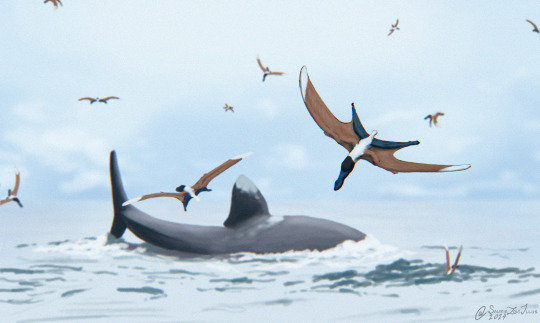
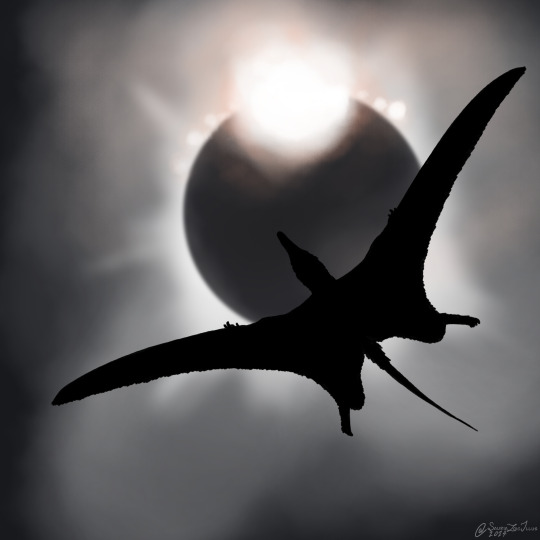
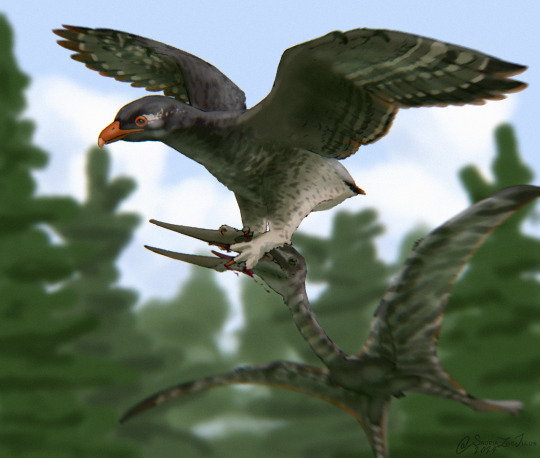
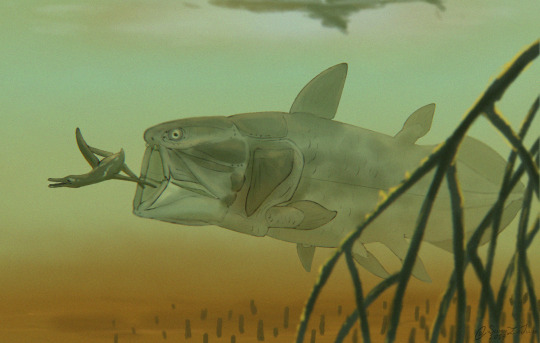
#Paleostream#paleoart#digital art#paleontology#digital artwork#artists on tumblr#palaeoart#digital illustration#sciart#id in alt text#sketch#sketches#pterosaur#Anhanguera#ichthyosaur#marine reptile#Platypterygius#Sordes#eclipse art#eclipse#solar eclipse#dinosaur#bird#extinct birds#enantiornithes#Avisaurus#azhdarchid#lobe finned fish#Mawsonia#plesiosauria
339 notes
·
View notes
Text

Direct evidence of frugivory in the Mesozoic bird Longipteryx contradicts morphological proxies for diet
Jingmai O’Connor, Alexander Clark, Fabiany Herrera, Xiaoting Zheng, Han Hu, Zhonghe Zhou
Summary
Diet is one of the most important aspects of an animal’s ecology, as it reflects direct interactions with other organisms and shapes morphology, behavior, and other life history traits. Modern birds (Neornithes) have a highly efficient and phenotypically plastic digestive system, allowing them to utilize diverse trophic resources, and digestive function has been put forth as a factor in the selectivity of the end-Cretaceous mass extinction, in which only neornithine dinosaurs survived. Although diet is directly documented in several early-diverging avian lineages, only a single specimen preserves evidence of diet in , the dominant group of terrestrial Cretaceous birds. Morphology-based predictions suggest enantiornithines were faunivores, although the absence of evidence contrasts with the high preservation potential and relatively longer gut-retention times of these diets. Longipteryx is an unusual Early Cretaceous enantiornithine with an elongate rostrum; distally restricted dentition; large, recurved, and crenulated teeth; and tooth enamel much thicker than other paravians. Statistical analysis of rostral length, body size, and tooth morphology predicts Longipteryx was primarily insectivorous. Contrasting with these results, two new specimens of Longipteryx preserve gymnosperm seeds within the abdominal cavity interpreted as ingesta. Like Jeholornis, their unmacerated preservation and the absence of gastroliths indicate frugivory. As in Neornithes, complex diets driven by the elevated energetic demands imposed by flight, secondary rostral functions, and phylogenetic influence impede the use of morphological proxies to predict diet in early-diverging avian lineages.
Read the paper here:
Direct evidence of frugivory in the Mesozoic bird Longipteryx contradicts morphological proxies for diet: Current Biology (cell.com)
214 notes
·
View notes
Text
Navaornis hestiae Chiappe et al., 2024 (new genus and species)

(Type skull of Navaornis hestiae [scale bar = 10 mm], from Chiappe et al., 2024)
Meaning of name: Navaornis = [discoverer of the original fossil and the site where it was found] William Nava's bird [in Greek]; hestiae = for Hestia [Greek goddess of architecture]
Age: Late Cretaceous (Santonian–Campanian)
Where found: Adamantina Formation, São Paulo, Brazil
How much is known: A nearly complete skull. Some associated bones from the rest of the skeleton likely belong to the same individual. A partial braincase from the same locality probably comes from a different individual of the same species.
Notes: Navaornis was an enantiornithean, a group of bird-like, usually flight-capable dinosaurs from the Cretaceous. It is one of a handful of enantiornitheans known to have been toothless, giving its skull a superficial resemblance to those of modern birds. However, Navaornis was unlike modern birds (and more like typical non-bird dinosaurs) in the proportions of the bones making up its upper jaw and the lack of a mobile joint in its palate.
The skull of Navaornis is so well preserved that the overall shape and structure of its brain can be reconstructed, a first for an enantiornithean. Similar to birds today, its brain was arched so that its brainstem pointed somewhat downward instead of backward, and the main part of the brain devoted to cognition was relatively enlarged (though not to the same extent as in modern birds). On the other hand, its cerebellum (part of the brain involved in coordinating movement) was relatively small. An especially unusual feature of Navaornis was its greatly enlarged inner ear, the functional significance of which is unknown.
Reference: L.M. Chiappe, G. Navalón, A.G. Martinelli, I. de Souza Carvalho, R.M. Santucci, Y.-H. Wu, and D.J. Field. 2024. Cretaceous bird from Brazil informs the evolution of the avian skull and brain. Nature 635: 376–381. doi: 10.1038/s41586-024-08114-4
100 notes
·
View notes
Text

Dinovember 2024 Day 19: Mystery of the Terrible Hand
Deinocherius mirificus was once known for decades from only a pair of 3-meter-long arms (initially thought to have been used for grasping prey) that were found in the 1970s, until the finding of its postcranial skeleton ten years ago revealed that it was actually a heavily-built behemoth of an ornithomimosaur with a duck-like head and a humped back that may have used its long arms to pull fish or grass close to its bill, thus making it one of the most bizarre dinosaurs ever known to science.
#paleoart#dinosaur#dinosaurs#paleontology#dinovember 2024#dinovember#dinovember day 19#deinocheirus#theropods#theropoda#theropod#dinosaur art#dinosaur artwork#nemegtosaurus#enantiornithes#nemegt formation
59 notes
·
View notes
Text

A midsized omnivorous enantiornithean bird from the Northern Kantishian. It is, despite its bright colour and distinctive song, rather elusive as it favours the highest parts of the tree canopy. Its feathers, especially the tail ribbons, are highly sought after by the Am-Wiek peoples, but the bird itself is rarely trapped and decorative use of its feathers depends on found shed feathers. Among the Am, feathers from this bird are never traded: they are a sign of a blessing from a forest spirit, and trading the feathers would insult the spirit. They are, however, sometimes gifted: the gift of a red ribbon feather is the highest courting gift and highly auspicious.
#'tober#i've been drawing exlusively birds for the past couple days and still have many birds to draw on my list.#so i might start posting them without much description though i did manage to whip something up for this one#this is also a bird drawn from feathers i'd drawn in other stuff HOWEVER i have not posted those drawings yet so no closeups for that one.#enantiornithes#birds#fauna#speculative biology#speculative evolution#worldbuilding#uanlikri#antiole world#art by me
31 notes
·
View notes
Text


From my first ever flocking paleostream! :D
Sordes and the neighbors fighting over an unexpected find. While none of those animals are dedicated scavangers, this ornithopod carcass was too good to miss.
#paleoart#paleostream#sordes#pterosaur#pterosaurs#rhamphorhynchid#jurassic period#batrachognathus#anurognathus#well... Not exactly but an anurognathid nonetheless#dinosaur#enantiornithes#my art#watercolour
25 notes
·
View notes
Text
Birds of Tehar

Note: Tehar has a taxonomic system somewhat different from the one in OTL. =otl is used to show what OTL clade is equivalent to that clade on Tehar. If =otl is not used, the clades are the same in two timelines.
Birds (Aves, =otl Theropoda) is the most diverse terrestrial vertebrate clade (typically considered a class) on Tehar, with over 13000 species inhabiting the planet's whole surface, except for deep oceans and some caves/subterranean ecosystems. Birds are a relatively young group of animals, having first evolved in Triassic and being closely related to another living class, gryphons (Gryphi, =otl Ornithischia) and an extinct class Anserotitania (=otl Sauropodomorpha), united together in a clade called dragons (Dracones, =otl Dinosauria). They are also more distantly related to suchians (Suchia, =otl Pseudosuchia).
Some characteristic features of birds are their, at least ancestrally, bipedal gait, light pneumatized skeletons and complex breathing system with air sacs inside their bodies; some traits, such as strict oviparity, feathers and endothermy, are shared with other dragons; finally, a common feature for most but the most basal birds today is complex feathers and ability to fly.
Historically, there were many different ways to classify birds, such as splitting birds into Pterygornithes, incorporating all winged birds, and Apterygornithes, incorporating the archaic wingless lineages; or dividing them into Odontognathae (toothed) and Anodontognathae (toothless). Externally, it was pretty well-understood that birds and gryphons are relatives, but what other groups do they have relations with has been a subject of debates for decades. Still, nowadays it is pretty well-known that birds (and gryphons) are suchian relatives, and internally, bird class has been divided into 6 living and many more extinct clades.

The most basal living avian clade is Euapterygornithes (=otl Ceratosauria). Wingless, toothed and long-tailed, these avians have branched off the whole avian tree all the way in the Triassic. Nowadays they are a very diverse group, including animals of different sizes, diets and anatomy, having underwent most of that evolutionary radiation relatively recently in the Paleogene. They inhabit Motutea, Kadalia, Tanah and Uzun.
Somewhat less basal than the euapterygornitheans are the motunuiavians, found predominately at Motunui but also at Motutea. These birds are also wingless, toothed and long-tailed, but they have much more rigid tails and are, in fact, closer to all other living bird groups than they are to euapterygornitheans. There is a relatively little number of their species nowadays, most of them predatory. The ancient ferocious regiavids of Cretaceous Uzun are their close relatives.
Third group of birds, enantiornitheans, is extraordinarily diverse. They have lost long tails and are typically volant, with feathery wings helping them stay in the air. However, they have teeth. After neognaths they are the most diverse birds on Tehar, though differences in their ontogenesis and social behaviour make them less prone to high diversification of species (most enantiornitheans, unlike most neognaths, grow slowly and occupy multiple niches as they age). Enantiornitheans are found worldwide.
The fourth, relatively small, avian group is Noctiraptora. While historically these toothed, volant birds have been considered a peculiar branch of enantiornitheans, they are nowadays seen to be closer to palaeognaths and neognaths and particularly close to an extinct lineage of aquatic Cretaceous birds, Palaeolari (=otl Ichthyornithes). Noctiraptorans are exclusively predatory and volant, and are more diverse at Libya and Uzun than any other continent.
Fifth bird group is small and includes almost exclusively secondarily flightless forms. The palaeognaths are edentulous, typically large and cursorial avians widespread on all continents, except for Motutea and Sagastan. They have some typical archaic features that have made them associated with enantiornitheans sometimes in the past, though nowadays they are well-understood to be neognath relatives.
Finally, the neognaths, the most common and diverse avian group on Tehar, inhabits the whole planet and includes a vast number of toothless, typically volant, birds of all shapes and sizes. From tiny songbirds of Uzun's temperate forests to giant flocks of seabirds at the shores of Qaria to terrifying bearbirds of Hatunwata, most birds on Tehar are neognaths.
#speculative evolution#worldbuilding#speculative biology#spec evo#birds#dinosaurs#bird art#dinosaur art#tyrannosauroidea#ceratosauria#enantiornithes#palaeognath#neognath#creature
17 notes
·
View notes
Text
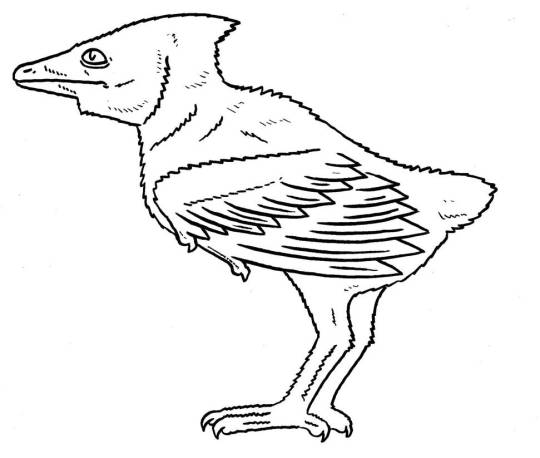
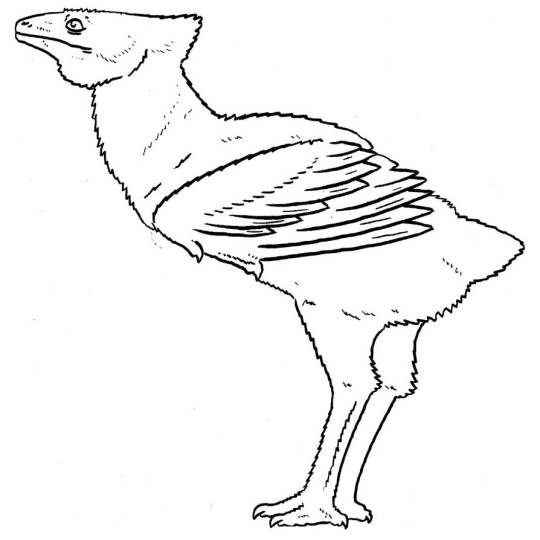
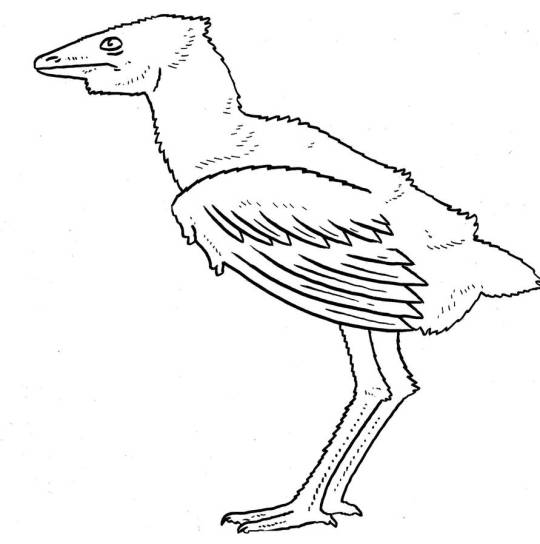
Commissions by Tim Morris to illustrate Lectavidae, a family of Late Cretaceous enantiornithean birds as recovered in several recent studies. Qiliania, Hollanda and Lectavis.
#paleoart#paleoblr#paleontology#palaeoblr#palaeontology#palaeoart#birds#dinosaur#dinosaurs#enantiornithes#enantiornitheans
10 notes
·
View notes
Text
my untreated sleep apnea was acting up buT I RETURN FROM MY ETERNAL NONRESTFUL SLUMBER to bring you our next dinosaur group race
enant groups based on Wang et al 2022 for my sanity
#dinosaurs#birds#polls#palaeoblr#hespeornithes#ichthyornis#enantiornithes#euornithes#gansus#apsaravis#longipteryx#pengornis#avisaurus
79 notes
·
View notes
Text
Early Cretaceous Jiufotang Formation
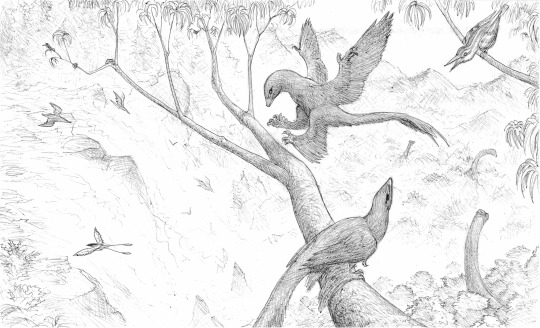
An illustration sketched with a ballpoint pen during my breaks at work (we've had a couple of slow days recently).
Based on some of the vertebrate fossils known from the Jiufotang Formation in China's Liaoning Province.
Foreground: several generic caterpillars, two Microraptor specimens, and a bird based on Longipteryx.
Background: one Confuciusornis, more Longipteryx-based birds, some generic titanosaurs.
#liaoning#china#early cretaceous#microraptor#confuciusornis#titanosaurs#longipteryx#enantiornithes#theropod#sauropod#feathered dinosaurs#birds#jiufotang formation#pen drawing#pen sketch#ballpointpen#paleoart#illustration#pen doodles
41 notes
·
View notes
Text






Good morning tumblr, it's portfolio day! Every four months, artists around the internet share their work - and while for some reason it isn't super popular here on tumblr, I'd love to see that change.
I'm a bird biologist and scientific illustrator, and most of my artwork reflects that - I do illustrations for publications, outreach materials, and I've also done a few board games and other projects! But also this is tumblr and you folks are the only place I've found that loves to see my fanart as much as you do, and for that you have my whole heart, truly. I have such a passion for celebrating the stories and characters we as fans love and you guys give me so much enthusiasm to keep creating. Thank you all!
(See alt text for image descriptions!)
#portfolio day#scientific illustration#sciart#birds#birblr#birb#enantiornithes#extinct birds#invertiblr#invertebrates#lord huron#fanart#birdwatcher#nature#artists on tumblr
52 notes
·
View notes
Text
#LemuriaChallenge - Submission 2
im glad that so many people are enjoying the community event, we all worked very hard behind the scenes to make sure it was even better than Atlantis!





#LemuriaChallenge#spec evo#spec bio#speculative zoology#speculative evolution#speculative biology#worldbuilding#lemuria#mammal#dinosaur#pterosaur#pseudosuchian#unenlagiine#enantiornithes#azhdarchid#notosuchia#gondwanatheria
145 notes
·
View notes